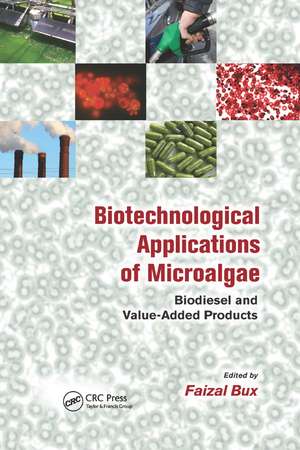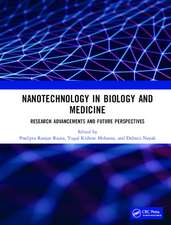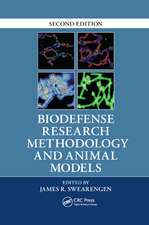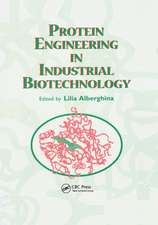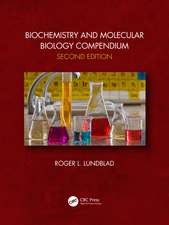Biotechnological Applications of Microalgae: Biodiesel and Value-Added Products
Editat de Faizal Buxen Limba Engleză Paperback – 23 sep 2019
The book provides a detailed discussion of microalgal strain selection for biodiesel production, a key factor in successful microalgal cultivation and generation of desired biofuel products. It also describes microalagal enumeration methods, harvesting and dewatering techniques, and the design, and the pros and cons, of the two most common methods for cultivation—open raceway ponds and photobioreactors. Chapters cover lipid extraction and identification, chemical and biological methods for transesterification of microalgal lipids, and procedures involved in life cycle analysis of microalgae. They also examine the importance of microalgal cultivation for climate change abatement through CO2 sequestration and microalgae involvement in phycoremediation of domestic and industrial wastewaters.
The book concludes with a general discussion of microalgal biotechnology and its potential as a modern "green gold rush." The final chapter provides an overview of advanced techniques such as genetic engineering of microalgae to increase lipid yield. This book provides a one-stop benchmark reference on microalgal biotechnology, considering all aspects, from microalgal screening to production of biofuels and other value added products.
| Toate formatele și edițiile | Preț | Express |
|---|---|---|
| Paperback (1) | 487.64 lei 43-57 zile | |
| CRC Press – 23 sep 2019 | 487.64 lei 43-57 zile | |
| Hardback (1) | 1329.22 lei 43-57 zile | |
| CRC Press – 22 mai 2013 | 1329.22 lei 43-57 zile |
Preț: 487.64 lei
Preț vechi: 573.70 lei
-15% Nou
Puncte Express: 731
Preț estimativ în valută:
93.31€ • 97.67$ • 77.66£
93.31€ • 97.67$ • 77.66£
Carte tipărită la comandă
Livrare economică 31 martie-14 aprilie
Preluare comenzi: 021 569.72.76
Specificații
ISBN-13: 9780367380021
ISBN-10: 0367380021
Pagini: 260
Dimensiuni: 156 x 234 x 15 mm
Greutate: 0.41 kg
Ediția:1
Editura: CRC Press
Colecția CRC Press
ISBN-10: 0367380021
Pagini: 260
Dimensiuni: 156 x 234 x 15 mm
Greutate: 0.41 kg
Ediția:1
Editura: CRC Press
Colecția CRC Press
Public țintă
Academic and Professional Practice & DevelopmentCuprins
Microalgal Cultivation Reactor Systems. Harvesting of Microalgal Biomass. Lipid Identification and Extraction Techniques. Synthesis of Biodiesel/Bio-oil from Microalgae. Analysis of Microalgal Biorefineries for Bioenergy from an Environmental and Economic Perspective Focus on Algal Biodiesel. Value-Added Products from Microalgae. Algae-Mediated Carbon Dioxide Sequestration for Climate Change Mitigation and Conversion to Value-Added Products. Phycoremediation by High-Rate Algal Ponds (HRAPs). Microalgal Biotechnology: Today’s (Green) Gold Rush.
Notă biografică
Professor Faizal Bux serves as director at the Institute for Water and Wastewater Technology at the Durban University of Technology. He has 17 years of experience in the fields of water and wastewater treatment, bioremediation and biotransformation of industrial effluents for the production of valuable by-products, and biotechnological applications of microalgae including biodiesel. Professor Bux serves on the Management Committee of the International Water Association (IWA) specialist group, Microbial Ecology and Water Engineering. He also serves as a scientific advisor for various NGOs, both in South Africa and internationally, especially with regard to water quality issues.
Descriere
This book presents the latest developments and recent research trends focusing on potential biotechnological applications of microalgae. It gives an analysis of microalgal biology, ecology, biotechnology, and biofuel production capacity as well as a thorough discussion on the value added products that can be generated from diverse microalgae. Chapters cover strain selection, growth characteristics, large-scale culturing, enumeration methods, and biomass harvesting and dewatering techniques. They also describe extraction, identification, and transesterification of microalgal lipids, and microalgae involvement in CO2 sequestration and phycoremediation.
